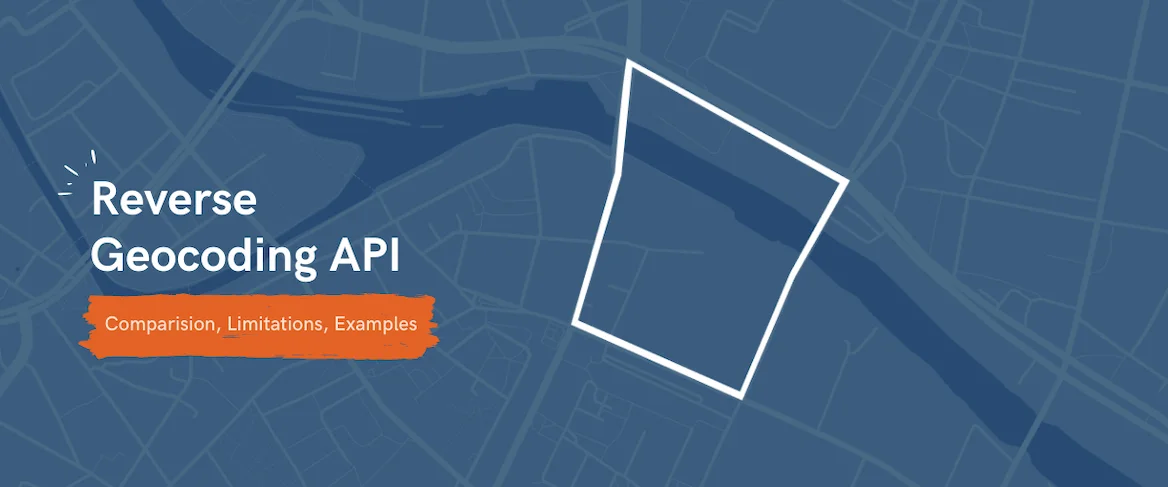
How to Choose the Best Reverse Geocoding API: A Practical, Technology-Focused Guide
BigDataCloud August 12, 2025
Reverse geocoding — converting latitude/longitude coordinates into human-readable place names — is a vital building block for many modern applications. From ride-hailing and delivery apps to business analytics and personalised content, it transforms raw coordinates into meaningful context.
But choosing the right API isn’t simply about picking the most recognisable name. The best choice depends on the level of accuracy you actually need, how quickly you need responses, and whether you’re paying for features you don’t use.
In this guide, we’ll compare Google Maps, HERE, Mapbox, OpenStreetMap Nominatim, and BigDataCloud, focusing on technology, cost, and practicality. We’ll also explore why, for most use cases, street-level accuracy is unnecessary overkill — and how BigDataCloud’s approach offers unique advantages.
1. Do You Really Need Street-Level Accuracy?
Many applications do not require knowing the exact street number, and paying for that precision can be a waste.
- City/suburb-level accuracy is sufficient for location-based personalisation, analytics, reporting, and regional targeting.
- Street-level precision demands larger datasets, frequent updates, and more processing — all of which slow responses and increase costs.
Example: A travel booking site showing relevant local deals only needs to know a user is in “Bondi, NSW”, not the exact street address.
2. The Cost of Overkill
Street-level geocoding not only costs more per request — it also tends to be slower and subject to stricter licensing.
| Provider | Free Tier | Paid Pricing (approx.) | Focus | Typical Latency |
|---|---|---|---|---|
| Google Maps | $200/mo credit | $5–$10 per 1,000 requests | Street-level | Higher |
| HERE | 250k free tx/mo | ~$1–$5 per 1,000 | Street-level | Higher |
| Mapbox | 100k free req/mo | ~$1–$4 per 1,000 | Street-level | Moderate |
| OSM Nominatim | Free (strict limits) | Self-host | Street-level (varies) | Varies |
| BigDataCloud | Free client-side, high-volume | Low-cost server-side | Admin-level focus | Low |
3. Cost vs Latency: Visual Comparison
How to read this chart:
- Lower and to the left = better value (lower cost, lower latency)
- Street-level providers tend to sit higher and to the right — slower and more expensive
- BigDataCloud sits in the sweet spot: low latency and zero cost for high-volume client-side use under the Fair Use Policy

4. Geographic Names Aren’t Standardised
One of the trickier issues in location data is that place names vary:
- “São Paulo” vs “Sao Paulo”
- “Kyiv” vs “Kiev”
- Different scripts, abbreviations, and local conventions
This means the same coordinates can yield different results from different APIs. When you combine reverse geocoding with IP geolocation, mismatched naming can cause inconsistencies in reports and user experience.
5. IP Geolocation + Reverse Geocoding from the Same Dataset
If a user’s device doesn’t share GPS coordinates — common with desktop users or privacy-conscious mobile users — IP geolocation is the fallback.
BigDataCloud advantage: Both IP geolocation and reverse geocoding use the same, normalised, multilingual dataset, ensuring:
- Consistent outputs
- Cleaner analytics
- No extra normalisation code
6. Multilingual Support That’s Truly Global
For international audiences, language support matters. Most providers offer partial translations — often incomplete at the local level.
BigDataCloud provides full multilingual support for place names, so “Munich” can also be “München”, “Monaco di Baviera”, or “Мюнхен” — automatically.
7. The Only Completely Free Client-Side High-Volume Solution
For browser-based apps, BigDataCloud offers something unique:
- Free even for high-volume usage — provided it’s client-side and within the Fair Use Policy
- No server relay needed
- No API key required for client-side calls
- Optimised for low-latency and minimal bandwidth
Perfect for:
- High-traffic map applications
- Client-side personalisation
- Public-facing tools where server-side billing would be costly
8. Final Recommendations
If you truly need door-number accuracy — for example, in delivery or emergency services — a street-level provider like Google Maps or HERE is the right choice.
But for most applications where city/suburb accuracy is enough, an administrative-level reverse geocoder will be:
- Cheaper
- Faster
- Easier to integrate with IP geolocation
BigDataCloud stands out by:
- Focusing on administrative-level accuracy (city, suburb, postcode, country)
- Using the same dataset for IP geolocation and reverse geocoding
- Offering full multilingual support
- Being completely free for client-side, high-volume usage under fair use